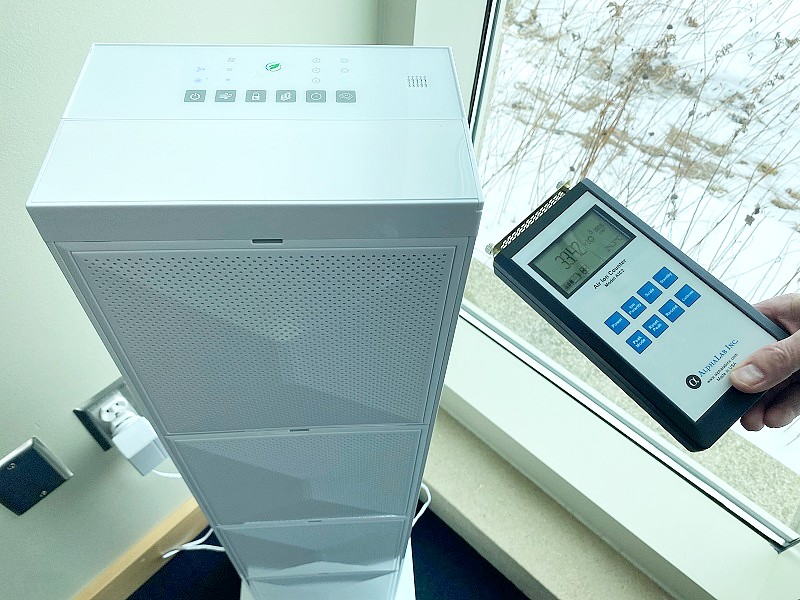When Great River Energy employees who worked remotely the last two years due to the pandemic returned to the office earlier this month, their workspace looked and functioned much in the same way it did in March 2020 but with the addition of several air quality safety upgrades.
The nature of COVID-19’s ability to spread via airborne particles and droplets made it a priority for Sarah Anton, manager facilities services at Great River Energy, to identify solutions that would limit the disease’s spread in Great River Energy buildings.
“Once a large portion of employees were directed to work from home, we began evaluating the ways in which we could make our buildings safer once they returned,” Anton said. “We consulted with a mechanical engineering firm that suggested many of the new technologies we have incorporated. Some of the upgrades will not be seen by employees or visitors, but they will be working round-the-clock to ensure the highest grade of air quality we can provide.”
Three main changes were made to corporate offices and service centers:
- HVAC filters were upgraded to MERV 15 rating
- Bipolar ionization systems were installed
- Air purifiers were tested and added to conference rooms in Maple Grove and Elk River
All together, these upgrades create a hospital-grade air filtration system.
Todd Beck and Mark Royseth, both building & security technicians and electricians at Great River Energy, were leads on these various projects throughout the last two years.
Beck noted that by moving to a higher MERV (Minimum Efficiency Reporting Value) rating — a 15 on a scale from 1 to 16 — the air filtration systems will be more efficient in trapping airborne particles, essentially removing all bacteria. This is the same type of filtration typically used at hospital inpatient care facilities.
Royseth explained how each floor of the Maple Grove office has a fan coil that mixes, recirculates and temperature-regulates return air, and then blows it under the floor. Inside of these coils is where the bipolar ionization systems were installed. This emerging technology creates and releases ions that seek out and form bonds with particles in the air — such as certain bacteria and viruses, odors and smoke — to create clusters that are easier for the HVAC system to filter out.
“The air at Maple Grove turns over four times an hour,” Royseth said. “We’re continuously getting fresh air filtered through the bipolar ionization systems. They’re knocking all those bad air particles down and removing contaminants.”
The third air quality upgrade made to Great River Energy facilities is one employees will be able to see: air purifier towers. This equipment was placed in several of the largest conference rooms in Maple Grove and Elk River offices after a study conducted by the facilities team in coordination with the mechanical engineering firm showed positive findings.
Anton said her group will continue evaluating any building upgrade needs as they relate to creating a safer environment for employees and guests.
“Our buildings were always fit to meet required standards for air quality and efficiency, but they were never intended to protect against an infectious virus like COVID-19,” she said. “The upgrades we have made over the last two years will serve employees and visitors well into the future by protecting them against not just the current coronavirus, but the flu and other bacteria.”

 " data-object-fit="cover">
" data-object-fit="cover">
 " data-object-fit="cover">
" data-object-fit="cover">